Last weekend I saw a friend get dropped by his belayer. Out of the corner of my eye, I saw a body whizzing down way too close to the ground. Fortunately, after falling about 30 feet, the climber came to a stop literally inches before he hit the ground.
A few weeks earlier, another set of climbers I know had much less luck. Long story short, my friend, who was belaying, dropped another friend about 50 feet. He hit a slab and very badly injured his heel (though no bones were broken). On one hand, both were lucky that the accident wasn’t worse. Yet on the other hand, the accident should’ve never happened in the first place.
Belaying is the most important, sacred job we have as climbers—yet it’s often the thing you witness climbers treat most casually. Also it’s often true that the more experienced you become as a climber, the more casually you begin to regard your duties as a belayer. After all, you’ve gotten away with years of no incidents or close calls—you must be doing something right. Right?
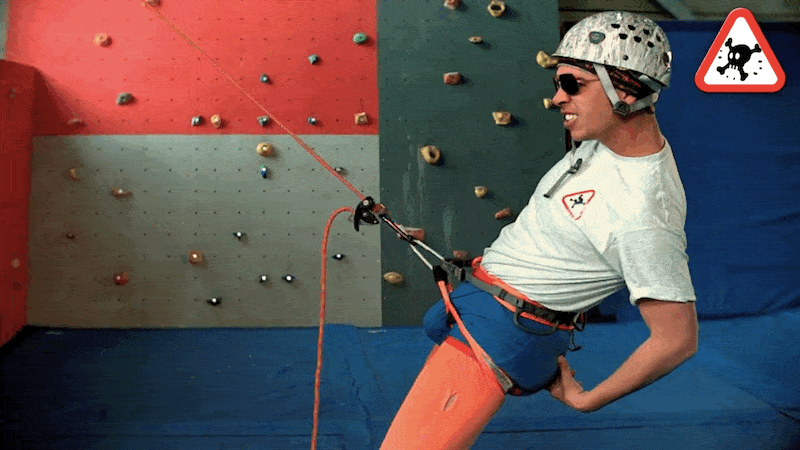
No matter how good our track records are as belayers, we’ve all had moments in which we’ve gotten lucky. Every one of us has had at least one moment of inattention or distraction in our belaying careers. Usually, we get away with it, like running a red light. But had our climbing partners fallen at that exact wrong moment of inattention or distraction, we would’ve joined the club that no climber wants to be in—but yet many are.
The ultimate blasphemy in climbing is to break the trust of the climbing partnership and drop our partners. Yet … these accidents happen all the time. And these accidents will continue to happen. This is a reality, but it is not an excuse. This post is my friendly reminder to climbing community that we must continue, every day of our climbing careers, to regard our duties as belayers with the obedience of a monk and the vigilance of a gladiator.
The Petzl Grigri is the assisted-braking belay device by which all others are measured. It’s the most common and, in my opinion, also the best single-rope assisted-braking device currently on the market. Yet not a month goes by that you don’t hear about a belayer dropping a climber, despite using a Grigri. Some of these rules apply specifically to the Grigri and to sport-climbing situations.
In some ways belaying is the simplest thing we do in climbing. Yet in other ways it’s the most nuanced—filled with little precautions and mindful moments that add up to make all the difference. Instead of writing a more elementary how-to belay article, I wanted to outline some of the nuances to belaying that might help make you go from being a good belayer to a great one.

Don’t Talk While Belaying
Obviously, if you’re chatting with friends in the gym or at the base of the route, you’re not fully paying attention to your partner. Don’t be afraid to say, “Sorry, let me finish belaying, and I’ll be able to respond.”
Don’t talk to your friends at the base. And don’t give beta to a climber who isn’t the one you’re belaying.
And Don’t Talk to the Belayer
The above rule goes both ways. If you walk up to the crag and see your long-lost bro from Yosemite or your BFF from Boulder Rock Club, don’t start talking to him or her if he or she is belaying! If you must, acknowledge the person with a quick hello, but immediately follow it up with, “I’ll let you finish belaying, and then let’s catch up.”
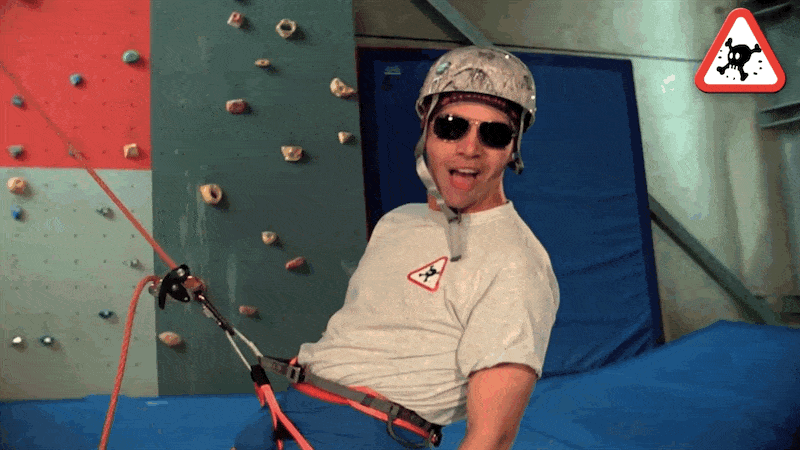
Prepare to Move
Belaying is not a passive activity. Great belayers are constantly moving around a “belay box,” which is an imaginary perimeter roughly 5’ x 5’ in size. Walk closer to the wall to quickly feed rope, and be prepared to quickly walk backwards in order to take in slack.
Beginners have the hardest time with this. They tend to keep both feet planted in one spot while they do an awkward series of motions trying to quickly take in rope or feed out slack.
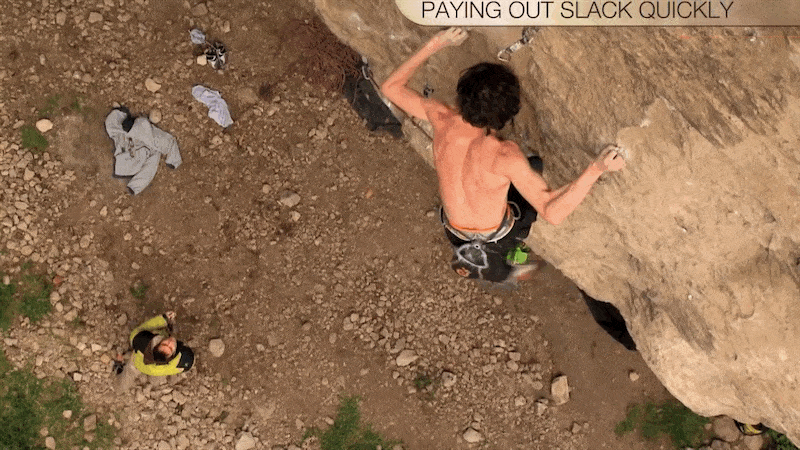
Don’t Wear Flip-flops
While this rule is more for your own protection than the climber’s, not wearing flip-flops could also translate to you giving a much better belay. Because belaying is not a passive thing in which you just stand still—you’re actually jumping and moving all around in response to what the climber needs—it really helps to wear appropriate footwear. If you smash your toe because you’re dressed for the beach and not for the belay, you’re more likely to be distracted and not give 100 percent of your attention to the climber. Similarly, when you catch a big fall, and you get sucked into the air or pulled toward the wall, you want good footwear to make sure that your feet plant first on whatever is in front of you so that you don’t hurt yourself.
Be Proactive with Distractions
Before the climber starts climbing, be proactive to prevent situations from arising that will distract you. This might mean tying up your dog so it’s not running wild and terrorizing another dog. It might mean putting on a down jacket, even if you’re not particularly cold but think that you might be soon. It might even be as simple as getting a bite to eat and a sip of water.
This also might involve inspecting your belay box and noticing potential hazards. Move that rock behind you so you don’t trip on it while taking in slack. Make a mental note that if the climber falls, you might very well be pulled up into that tree branch. You might not be able to change some of the hazards or distractions, but you should still prepare for them and be proactive to do what’s reasonable to prevent them.
Know What’s An Appropriate Amount of Slack
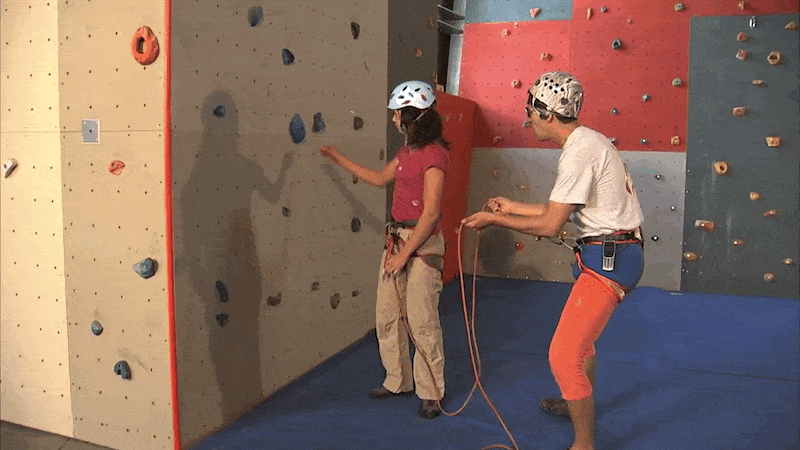
Having extra slack out does NOT equal a “soft catch”!!!
You should not ever have too much rope out, nor should the rope be too tight. The rope should never sag down below the height of your knees and it should definitely never be touching the ground. Nor should there be so little slack that every time the climber moves for a hold you feel the rope pull on your device.
An appropriate amount of slack is when there is a gentle curve in the rope between the height of your waist and knees.
Left Hand Off
One scenario in which a climber gets dropped is when the belayer grabs the rope with his left hand (i.e., the “guide hand”) during a fall. By gripping the rope above the Grigri, you will potentially prevent the device from locking up. I’ve personally witnessed this happen more than a few times.
We use the left/guide hand either to feed rope out to a lead climber, or to take in slack. But that is the left hand’s only job. So, unless you are feeding rope or taking in slack, do not keep your left hand gripping the lead end of the rope.
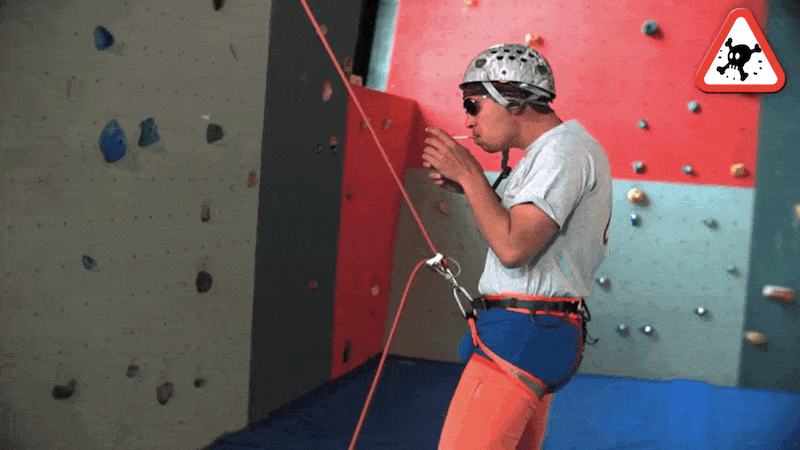
Don’t Wear a Belay Glove on the Left Hand
Another tip to prevent the above scenario is to not wear a belay glove on the left hand. When a climber falls, and you’re unknowingly grabbing onto the lead end of the rope with your left hand, you’re much more likely to continue holding onto the rope if you’re wearing a glove—and as I just explained, by doing so, you’re potentially preventing the Grigri from locking up.
There’s really no reason to wear a belay glove with your left/guide hand. So don’t do it.

Focus and Lower
I don’t wear a belay glove on my right hand (i.e., the “brake hand”) either while belaying. However, I will use a right-hand belay glove to lower my partner. After taking the climber onto my Grigri, and tying a safety/back-up knot into the brake-end of the rope, I take two seconds to put on my glove. Wearing a glove on my right hand provides me with much greater control while lowering my partner.
A glove isn’t mandatory, of course. But I like to wear one for the added control while lowering. Especially if the rope is dirty, using a glove also keeps my hand grime-free, which is good for when it’s my turn to go climbing.
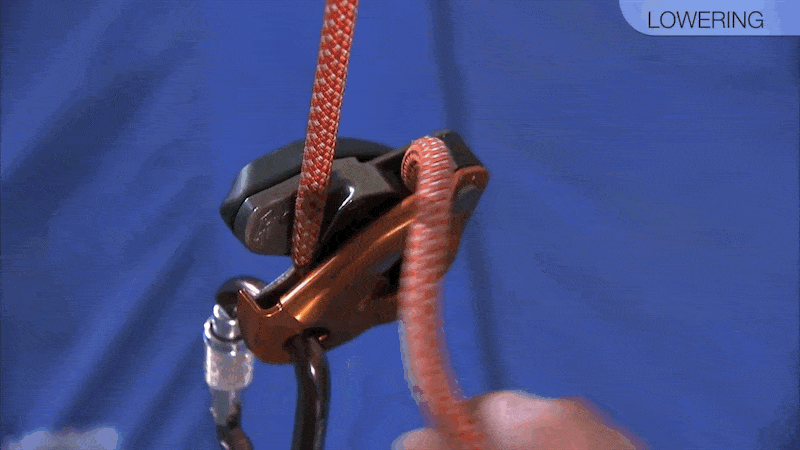
Don’t Fix Rope Kinks and Lower at the Same Time
One common situation I’ve noticed is belayers shaking the kinks out a rope while holding the Grigri open with the lever pulled back. Don’t do this. Either be lowering the climber, or be working the kinks out of the rope—but don’t do both at the same time. If you encounter kinks in the rope, let go of the Grigri lever so the device is locked up, and use your left hand to work out the kinks.
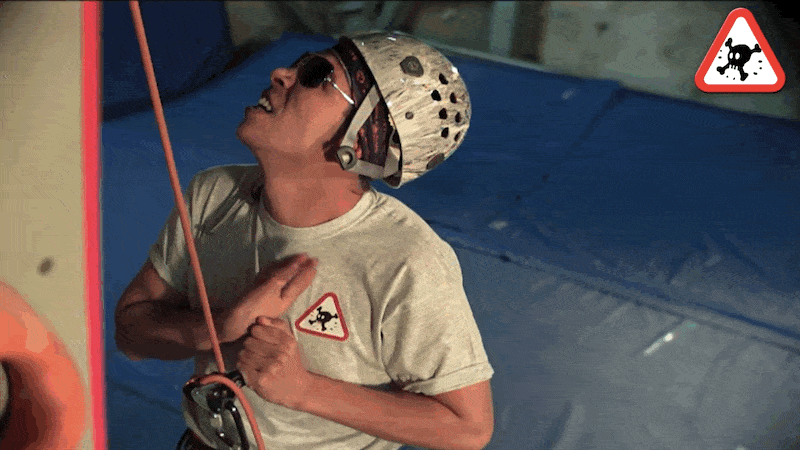
Try Some Belay Glasses
 Watching a climber is a real pain in the neck. Belay glasses are specialized spectacles that give you the periscopic quality of being able to see what’s happening above you without actually craning your neck upward.
Watching a climber is a real pain in the neck. Belay glasses are specialized spectacles that give you the periscopic quality of being able to see what’s happening above you without actually craning your neck upward.
There are currently a few different brands with offerings on the market: the CU Belay Glasses, Belay Specs and the Belaggles Belay Glasses. Belay glasses have their plusses and minuses, but it’s worth giving a pair a shot to see if you like them. I find I’m able to keep a much more attentive eye on the climber, and I’m less distracted by what’s going on around me.
It’s Not the Device’s Fault
All belay devices work 100 percent of the time—so long as they are used properly. Human error is always to blame in belaying accidents. No matter what device you use, it’s your job to really study and understand how the device works, how it’s intended to be used and to not stray outside those recommended procedures.
But not all devices work the same way. So just because you learn how to belay using one device doesn’t mean you automatically know how to belay using another device. There are a few universal rules such as don’t take your brake hand off the rope—but even that rule gets constantly broken in various, common, real-world scenarios. You need to know your device, its limitations and how it works better than every other piece of gear you own.
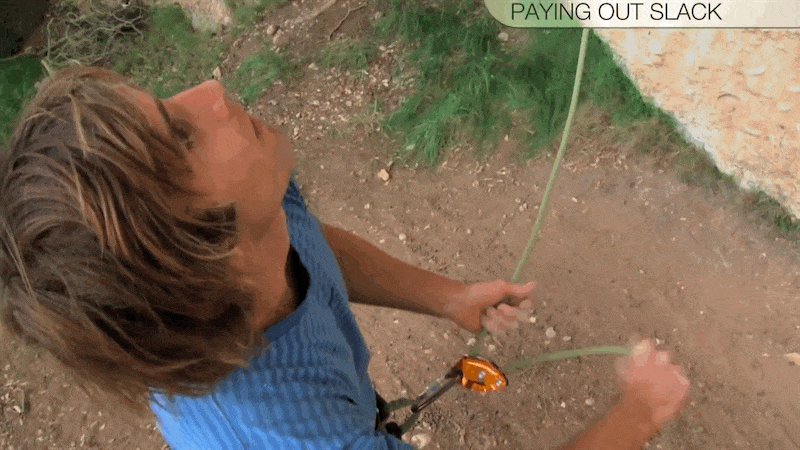
Tie A Knot in the End of the Rope
This one is an old classic that can’t be said too many times. I like to tie a knot into the rope tarp of my rope bag.
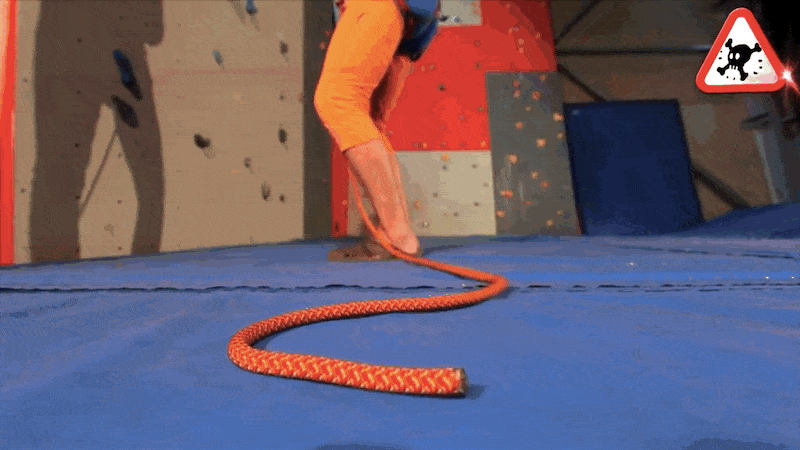

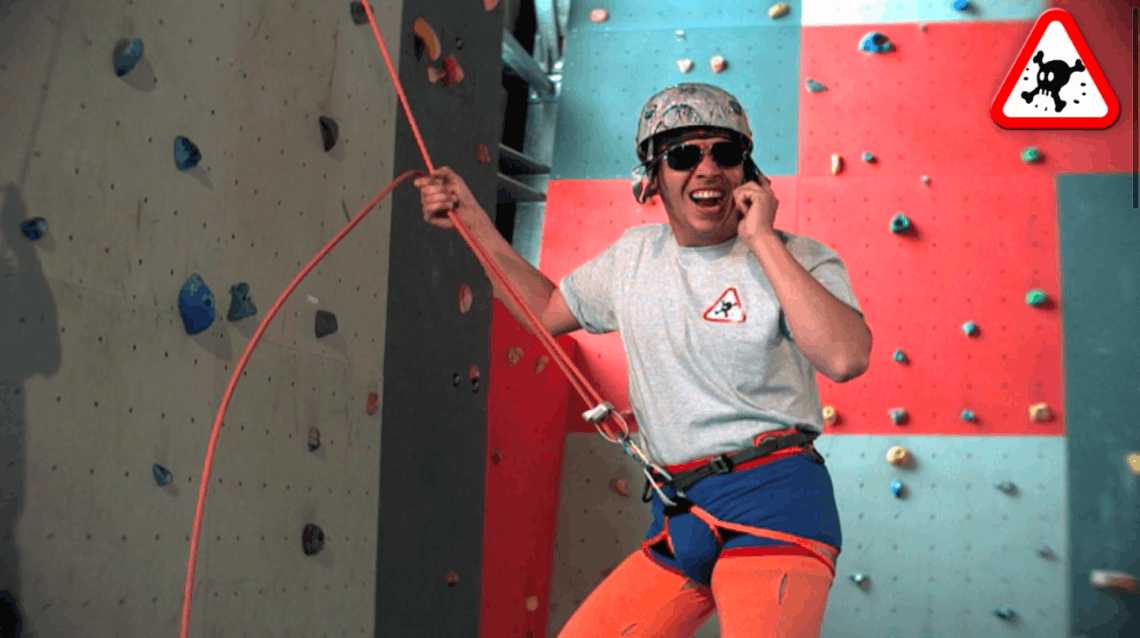


Excellent article! It’s fantastic to see well known climbers passionately advocating for safe belay practices.
Great post. Especially important are “be prepared to move” and “don’t wear flip flops” when there is a weight differential! My husb is 200# and I learned those early.